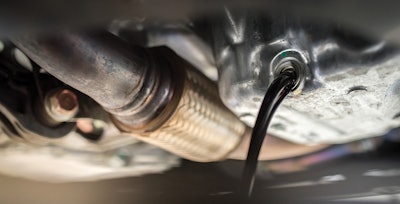
According to Dan Arcy, global OEM technical manager for Shell Lubricants, an engine oil analysis program requires users to follow a few fundamental procedures that often don’t get the attention they deserve. Some tips:
• Provide a proper oil sample to the lab. If you take your sample when the oil is being drained, catch it midstream by waiting at least 5 seconds. That way, you won’t collect heavy metals or other deposits from the bottom of the pan. Take a hot sample after the engine has been operating for 15 minutes. Clean the area where you insert the probe or sampling tube. Use a clean container. Withdrawing oil through the dipstick opening is another good method. Take each sample in the same manner each time, to keep your results consistent.
• Provide all information needed by the lab. You’d be amazed at how many oil samples are provided without completed labels or forms, says Arcy. For many labs, necessary information includes engine type, total engine miles (on-highway) or hours (off-highway), how many miles or hours on the oil itself, oil type, viscosity grade and oil manufacturer.
• Send the sample in immediately. Don’t let it sit in the shop for a month.
Download the entire “How to Do Everything Better Guide” PDF
More Maintenance/Management tips from “How to Do Everything Better”










